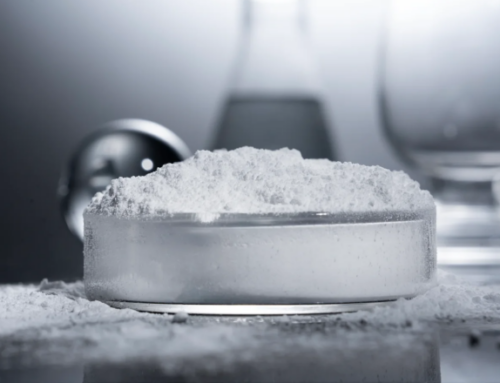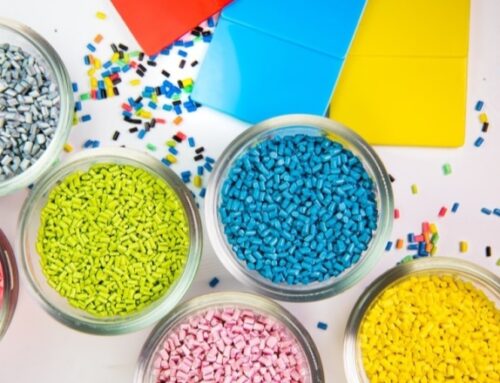Plasticizers are an important class of low molecular weight non-volatile compounds, which are widely used as additives in the polymer industry. The main effect of these substances is by reducing the secondary transition temperature, the glass transition temperature (Tg).
The IUPAC (International Union of Pure and Applied Chemistry) Council defines a plasticizer as “a substance or material incorporated into a material (usually plastic or elastomer) to increase its flexibility, machinability or expansibility”. These substances reduce the deformation tension, hardness, density, viscosity and electrostatic charge of the polymer, while increasing the flexibility, fracture resistance and dielectric constant of the polymer chain. Other properties are also affected, such as crystallinity, optical transparency, electrical conductivity, fire resistance and resistance to biodegradation, as well as other physical properties.

1. The function of plasticizer
Most plastic products are prepared through so-called “thermal compounding” technology, in which the formula ingredients are mixed under heat and shear forces to create a molten plastic (fusible) state that shapes into the desired product, cools and allows the development of ultimate properties of strength and integrity. Hot composite includes calendering, extrusion, injection and compression molding. The ease of plastic processing is significantly affected by the type and concentration of plasticizer, as well as other formula additives. Therefore, since they can not only change the physical properties of the polymer, but also improve the processing characteristics, plasticizers can also be considered as processing additives. Plasticizers can affect processing by reducing viscosity, faster filler incorporation, easier dispersion, lower power requirements and less heat generated during processing, better fluidity, improved release and enhanced viscosity.

Plasticizers are also essential additives in the production of biopolymer based films and coatings, as they improve the flexibility and handling capacity of the films, maintain integrity and avoid holes and cracks in the polymer matrix. Incompatibility usually manifests as a phase separation between biopolymers and plasticizers that appear on the surface of the product in the form of oozing droplets immediately after the product is mixed or during the final product application.
2. “Unpopular” raw materials into dark horse! Plasticizer ranks first in the annual increase!
After the rise of silicone, lithium, epoxy and other hot industry chains, the rising star of 2023 is actually the “unpopular” industry chain – plasticizer industry chain.
Plasticizer is a polymer material additive widely used in industrial production, which mainly weakens the secondary valence bond between resin molecules, increases the mobility of resin molecular bonds, reduces the crystallinity of resin molecules, increases the plasticity of resin molecules, enhances its flexibility, is easy to process, and can be legally used for industrial purposes. It is widely used in food packaging, cosmetics, and medical equipment. And environmental water bodies. Such as plastic wrap, food packaging, toys, etc.
According to the data, in the chemical market in 2023, most of the increases are raw materials in the plasticizer industry chain, including PX, acetic acid, isoctyl alcohol, DOP, DBP, DOTP, n-butanol and so on. Among them, isoctyl alcohol is at the top of the annual increase list, up 33%, an increase of 3217 yuan/ton.
The upstream pigment of plasticizer is relatively concentrated, and the fluctuation of 2023 crude oil brings cost support to it, and because there are more categories of plasticizer, up to 1000 kinds, the use is also relatively wide. Due to the further urbanization rate in China and the rapid development of downstream markets such as construction, automobiles and aerospace, involving wire, cable, flooring, artificial leather, building materials, medical equipment, automobiles, agricultural film, clothing, food and pharmaceutical packaging and other areas of the national economy daily life and new materials, terminal consumption demand is significantly boosted, and the scale of plasticizers is also expanding. In 2023, the plasticizer industry chain is soaring.
It is expected that in 2024, with the increase of environmental protection efforts, the use of traditional plasticizers will be limited, enterprises in the plasticizer industry chain in various countries will increase technological innovation and research and development investment, and plasticizers will usher in an upward period, but because of its high universality and wide application channels, the increase span will not be too large.

So far, bioplastics account for about 5-10% of the current plastics market. Although they are expensive to develop and have not yet achieved economies of scale, it is believed that the demand for these products will grow rapidly in the coming decades and will be widely used in packaging applications. Biopolymers meet environmental concerns, but they also exhibit some limitations in cost-related properties such as heat resistance, barrier properties, and mechanical properties. However, biobased polymers have found important applications, such as in the pharmaceutical and medical fields, where cost is less important than function itself.
In the scientific literature, a growing number of publications report the production and application of biopolymers with natural and/or biodegradable plasticizers, such as citrates, polyols, triacetin, oligolyester amides and fatty acid derivatives. Nevertheless, a deeper understanding of their interactions and fundamental physicochemical and biochemical properties is still needed in order to be able to design and produce ideal and competitive materials using compatible plasticizers.
Article from M&J International Trading Co., Ltd





